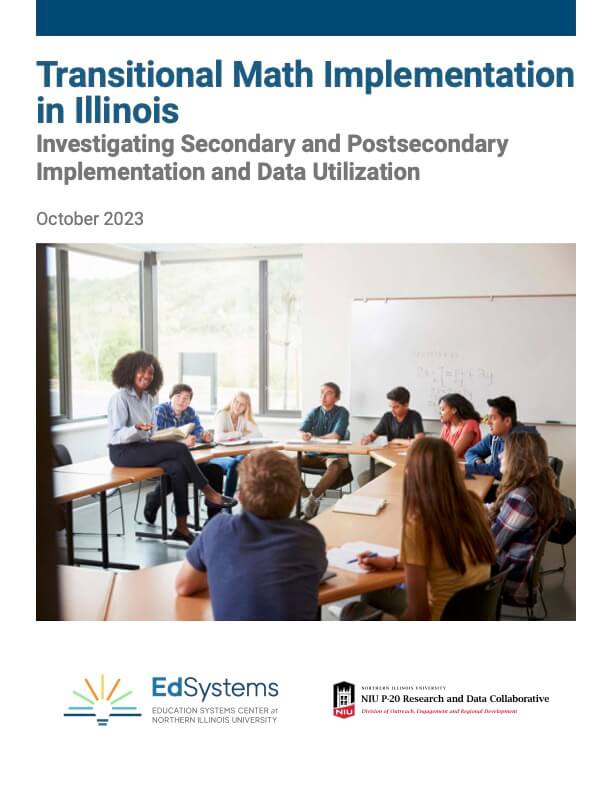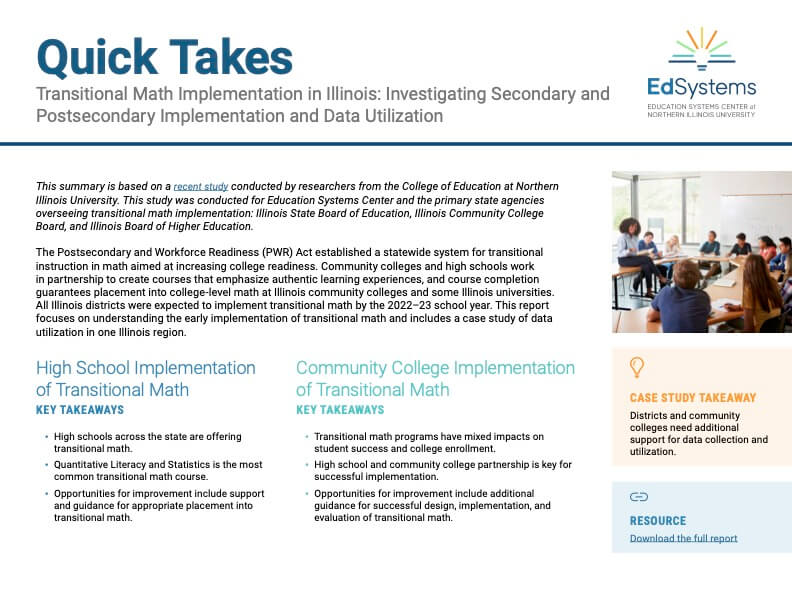The Postsecondary and Workforce Readiness (PWR) Act paved the way for a system of transitional math instruction across Illinois to bolster college readiness. This collaborative effort between community colleges and high schools focuses on fostering authentic learning experiences, and successful course completion ensures students’ placement in college-level math at community colleges and certain universities in Illinois. By the 2022–23 academic year, all districts in Illinois were expected to implement transitional math. This report provides insights into the initial stages of implementation and includes a case study on data utilization in a specific region of Illinois.
Key takeaways from the report include:
- High schools across the state are offering transitional math.
- Quantitative Literacy and Statistics is the most common transitional math course districts are offering.
- High school and community college partnership is key for successful implementation.
- Opportunities for improvement include support and guidance for appropriate placement into transitional math and for data collection and utilization.
In Partnership With
This study was conducted by the following Northern Illinois College of Education team members: Xiaodan Hu, PhD, Associate Professor, Community College Leadership Program Coordinator, Counseling and Higher Education, and Benjamin Creed, PhD, Associate Professor, Leadership, Educational Psychology, and Foundations. It was conducted for Education Systems Center and the primary state agencies overseeing transitional math implementation: Illinois State Board of Education, Illinois Community College Board, and Illinois Board of Higher Education.



